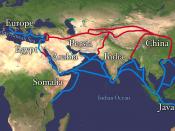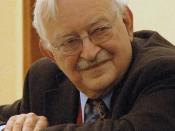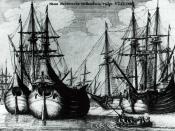Analysis of the world system theory originated in the 1970s, and while some thoughts and ideas have been in use for a long time, others are quite new. The most famous description of the world system theory is probably that of Immanuel Wallerstein. According to Wallerstein, the world system can be defined 'quite simply as a unit with a single division of labour and multiple cultural systems'. Three main instances stand out: mini-systems, world empires, and world economies. A mini-system is a smaller kind of society, such as a tribe or a village, while the modern world system is a world economy. Modern world systems are far more ethnically diverse, incorporating many different kinds of religion and culture. Yet Wallerstein often treats the modern world system as though it were the first world system theory in existence, emerging in the sixteenth century, whereas many historians believe that pieces and ideas of an early world system theory can be found throughout history.
The beginnings of the world system theory can be seen sporadically all through the early centuries; for the first few hundred years AD, the Roman and Chinese empires engaged in small amounts of contact and trade, but this ceased following the decline of both empires. During the seventh and eighth centuries, the religion of Islam grew to such a monumental degree that it unified many areas of the region of land that lay between Europe and China, and for several hundred years it was known as the epitome of civilisation, yet many of these areas were too isolated from one another for this unification to develop significantly. By the eleventh and twelfth centuries onwards, exploration and discovery had resulted in many parts of the world becoming aware of and connected with one another, particularly Europe and the Orient.


